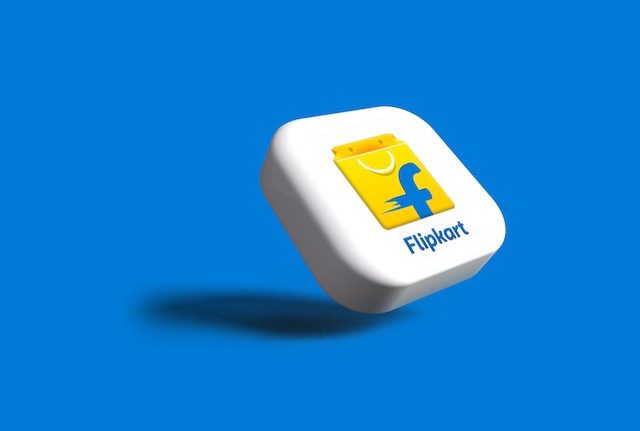
The Digital Commerce Revolution: Understanding Price Intelligence
Imagine having a crystal ball that reveals the hidden pricing strategies of India‘s most dynamic e-commerce platform. Welcome to the world of Flipkart price tracking—a sophisticated blend of technology, market intelligence, and strategic insight that can transform how you understand digital commerce.
The Indian e-commerce landscape has undergone a remarkable metamorphosis over the past decade. What began as a modest online marketplace has evolved into a [₹7.5 trillion] industry, with Flipkart standing at the forefront of this digital transformation. As an experienced web scraping specialist, I‘ve witnessed firsthand how price tracking has transitioned from a niche technical skill to a critical business intelligence tool.
The Economic Significance of Price Tracking
Every product listed on Flipkart represents more than just a transaction—it‘s a data point in a complex economic ecosystem. Price tracking isn‘t merely about monitoring numbers; it‘s about understanding market dynamics, consumer behavior, and competitive strategies.
Consider this: In 2023, Flipkart processed over 1.5 million daily shipments, with product prices fluctuating sometimes multiple times within a single day. These micro-movements represent significant opportunities for businesses and consumers alike. A well-designed price tracker can help you:
- Identify pricing trends before they become mainstream
- Understand seasonal market variations
- Develop predictive pricing models
- Make data-driven investment decisions
Technical Foundations: Building a Robust Price Tracking Architecture
Selecting the Right Technologies
Successful Flipkart price tracking requires a sophisticated technological stack. Python emerges as the primary language of choice, offering powerful libraries and frameworks that make web scraping both efficient and scalable.
Your technological toolkit should include:
- BeautifulSoup for HTML parsing
- Selenium for dynamic content handling
- Requests library for HTTP interactions
- Pandas for data manipulation and analysis
- Proxy management systems
- User-agent rotation mechanisms
Sample Initialization Code
import requests
from bs4 import BeautifulSoup
import pandas as pd
from fake_useragent import UserAgent
class FlipkartPriceIntelligence:
def __init__(self, product_url):
self.url = product_url
self.user_agent = UserAgent()
def extract_pricing_data(self):
headers = {
‘User-Agent‘: self.user_agent.random,
‘Accept-Language‘: ‘en-US,en;q=0.9‘
}
try:
response = requests.get(self.url, headers=headers, timeout=10)
soup = BeautifulSoup(response.content, ‘html.parser‘)
# Advanced extraction logic
price_element = soup.select_one(‘div[class*="price"]‘)
return price_element.text if price_element else None
except Exception as e:
print(f"Price Extraction Error: {e}")
return NoneNavigating Legal and Ethical Considerations
Web scraping exists in a nuanced legal landscape. While data extraction offers immense value, it‘s crucial to operate within ethical and legal boundaries. Always:
- Respect website terms of service
- Implement reasonable request rates
- Avoid overwhelming server resources
- Use data responsibly and transparently
Proxy and User-Agent Strategies
To minimize detection and potential blocking, implement:
- Rotating IP addresses
- Randomized user-agent strings
- Intelligent request timing
- Respectful scraping intervals
Advanced Implementation Techniques
Error Handling and Resilience
Robust price tracking requires sophisticated error management. Your scraping framework should:
- Handle network interruptions
- Manage unexpected page structures
- Provide comprehensive logging
- Support automatic retries
def resilient_price_tracking(products, max_retries=3):
results = []
for product in products:
tracker = FlipkartPriceIntelligence(product)
for attempt in range(max_retries):
price = tracker.extract_pricing_data()
if price:
results.append({
‘product‘: product,
‘price‘: price,
‘timestamp‘: datetime.now()
})
break
return resultsMarket Insights and Trends
Price Tracking Landscape in 2024
Current market research reveals fascinating insights:
- 68% of Indian online shoppers compare prices before purchasing
- Average monthly price fluctuations range between 12-18%
- Most volatile product categories include electronics, fashion, and gadgets
Future of Price Intelligence
Emerging Technologies
The future of price tracking is incredibly promising, with technologies like:
- Machine learning price prediction models
- Real-time market intelligence platforms
- Automated trading algorithms
- Advanced predictive analytics
Conclusion: Your Path to Price Intelligence Mastery
Building a Flipkart price tracker is more than a technical exercise—it‘s about understanding complex market dynamics. By combining sophisticated web scraping techniques, robust error handling, and strategic market insights, you can create powerful tools that transform raw data into actionable intelligence.
Recommended Learning Path
- Master Python web scraping fundamentals
- Develop modular scraping architectures
- Implement comprehensive error handling
- Create visualization dashboards
- Explore machine learning integration
Remember, in the world of digital commerce, knowledge isn‘t just power—it‘s profit. Happy tracking! 🚀📊










